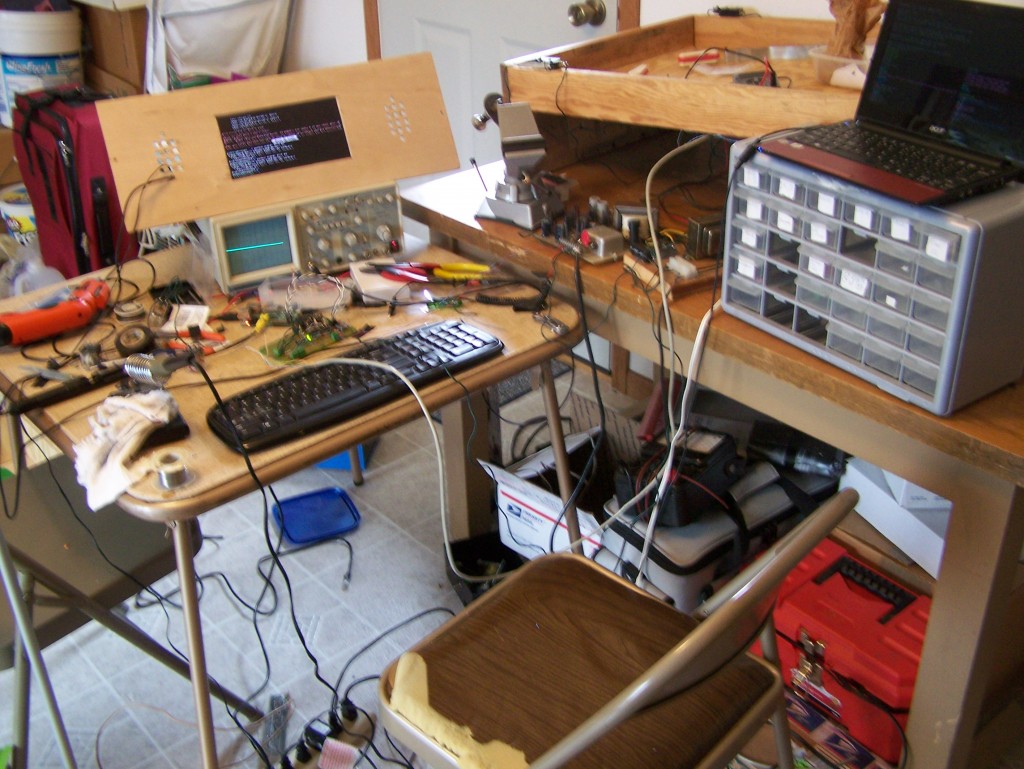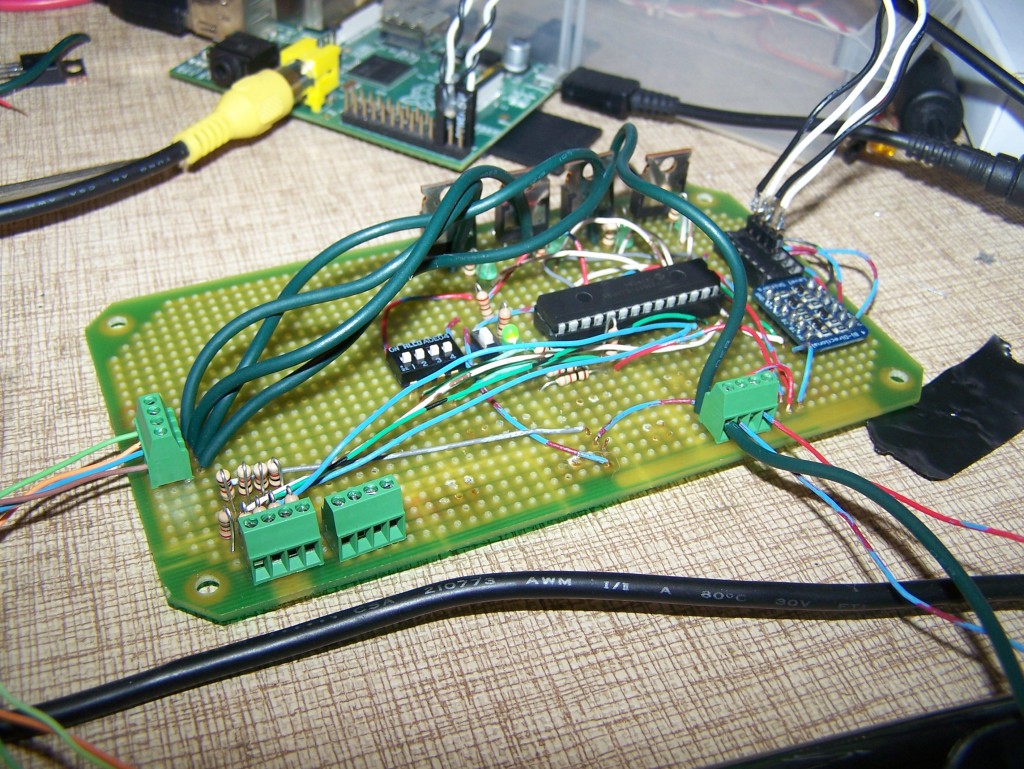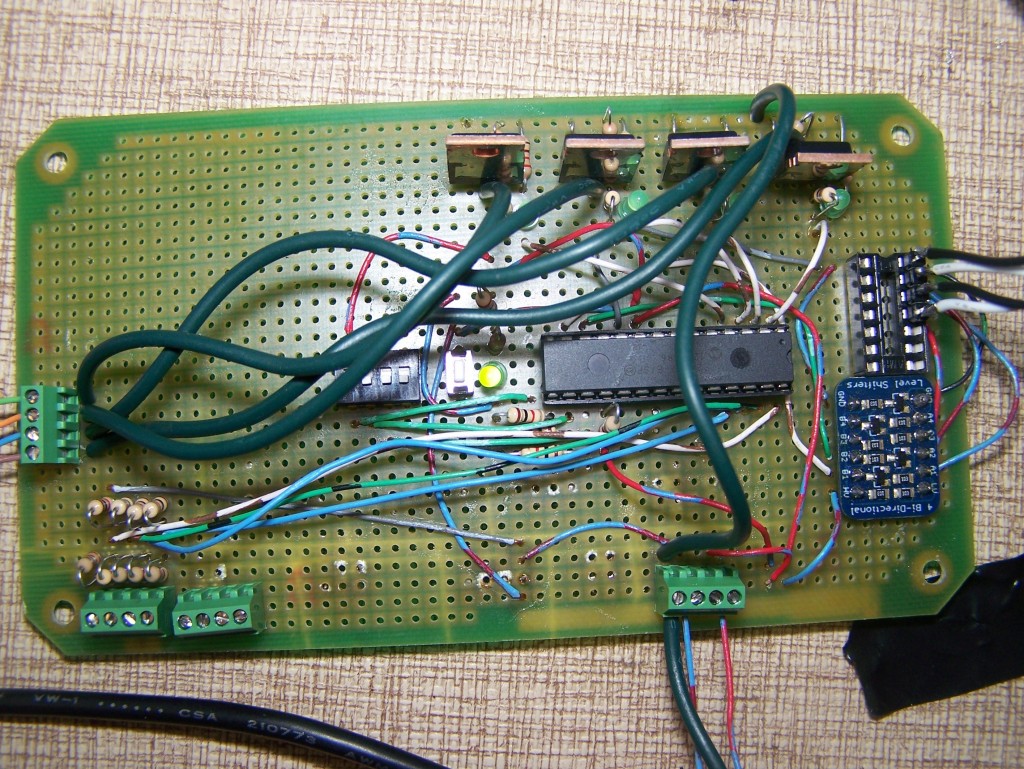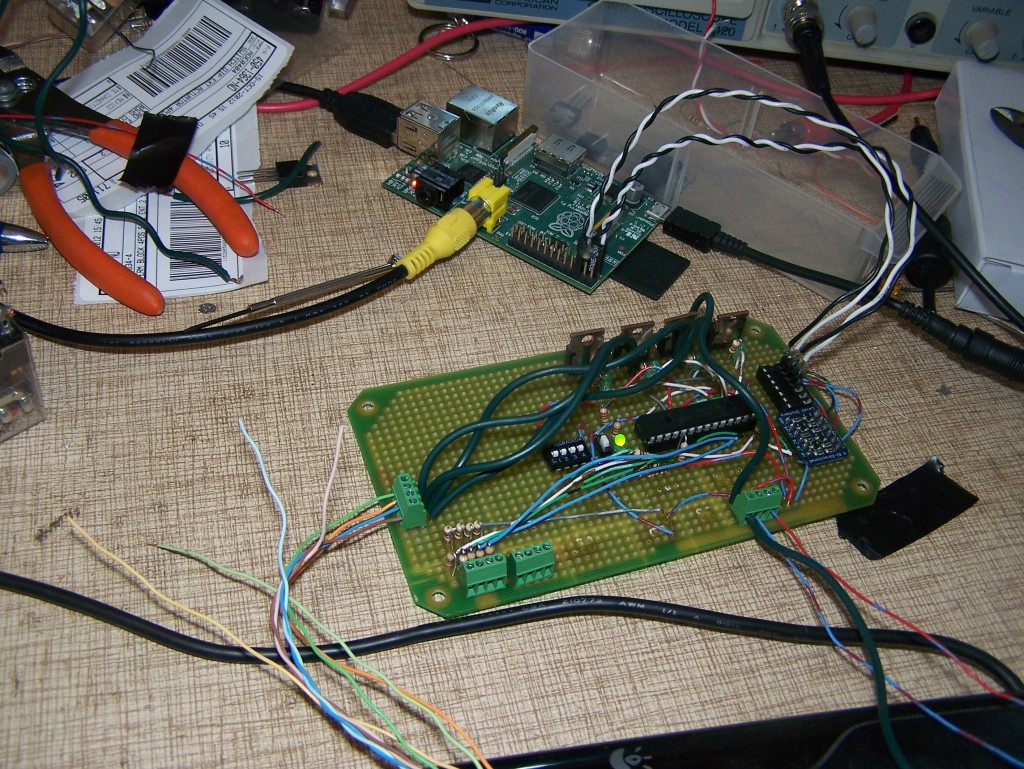We’ve got snake (Python) brains! All the solenoids in the prototype playfield can now be controlled by the raspberry pi, and my python library! 😀 That’s really exciting because it means that the entire electronics flow from software to physical motion is past the drawing board. Basically, we now have proof of concept for the whole machine!
After nearly a week of dwelling in this hardware hacker’s heaven of wires, raspberry pi, analog circuitry, and plenty of solder smoke, an interface emerges up out of the dust that can work miracles for a pinball.
The interface board has some great key features: The dip switches can set the I2C address of that board, allowing for address changes on the fly. The Logic Level Converter allows for direct connection to the RaspberryPi, the MOSFETS pull whatever input signal is given them to ground, thus they can be used to drive any voltage of solenoid, and all connections go through handy terminal blocks for easy connection!
As you can see, I used a state-of-the-art multi-layered design for the wiring. It’s very beautiful, and not awkward at all.
Here you can see the Raspberry Pi connected to the interface board. It’s been quite a little champ, and seems to have no trouble running Python fast enough to control a pinball machine. 🙂
That’s all folks!
If you don’t want to miss any updates, follow me on Twitter @marktbaldridge, and if you have any questions, feel free to comment!



